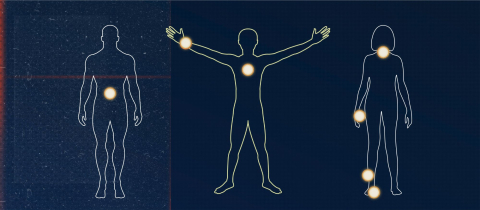Until there is an effective treatment or vaccine, the best strategy to win the war against COVID-19 (SARS-CoV-2) is to stop its spread through the population. This requires extensive tracking of infected individuals and those with whom they may have come in contact. Tracking and tracing is a major undertaking, fraught with problems and uncertainties. Being able to definitively determine whether an individual is infected or not is crucial for gaining insight into the spread of the infection and can form the basis of effective risk mitigation approaches.
Several tests to detect COVID-19 are available in different parts of the world. Some are just different versions of the same test and therefore provide the same basic information, with perhaps varying levels of sensitivity or rapidity of response. There are basically two major types of tests, one that reveals the presence of the virus and one that detects the response of the body to the virus. Both are necessary, since they provide complementary information, and viewed together, provide a comprehensive picture.
Early in a pandemic, the test that is most useful is the one that can detect a virus. It allows health authorities to identify infected individuals and study the spread of the virus. The test is based on detecting various components of the virus. For instance, most current COVID-19 tests detect viral genetic material, with some providing results more rapidly than others. A related test that was recently approved by the FDA detects viral proteins instead of the genetic material, but still provides the same information, the presence or absence of the virus.
Being able to detect the presence of the virus is, of course, critical, not only in the case of someone exhibiting symptoms but also for asymptomatic carriers, because the latter, unintentionally, play a major role in viral propagation. This is particularly relevant in the case of COVID-19 because the incubation period can be as long as 14 days. In other words, for 14 days, someone can transfer the virus to others while feeling perfectly healthy. In theory, extensive testing in the early phase can halt the spread of the virus, but in practice, testing as many people as would be required for successful implementation of this strategy is difficult to accomplish. In the absence of extensive testing, the only solution is to mitigate the risk of dissemination by everyone behaving as though they were carrying the virus and therefore maintaining a safe distance from each other, commonly referred to as “social distancing,” although the appropriate term should be “physical distancing.”
But what if the test is negative? This just means that there is no virus present at that point in time. It does not exclude the possibility that the virus was present in the past, and has since been eliminated by the body. Knowledge of past infections is also crucial, but for a different reason. Health officials need this information to determine whether the pandemic is moving to the next stage which is characterized by clearance of the infection.
Recently the FDA gave conditional approval to a test that does precisely that. The test developed by CTK Biotech (San Diego, CA, USA) detects the response of the body to the viral infection, instead of the virus itself. It detects antibodies, an important element of the body’s response, which can first be detected a few weeks after the infection, but which persist long after the virus has been cleared from the body. Often their presence is indicative of an immunity or resistance to reinfection by the same virus.
Given that COVID- 19 is relatively new, there is no data regarding the persistence of antibodies in the circulation or their efficacy in preventing future infections. Reports regarding the response to related viruses are variable, but given that there were at least some individuals who recovered from SARS (SARS-Cov-1) and MERS (MERS-CoV), and maintained an ability to resist infection for several years, we can be cautiously optimistic that the same will be true in the case of COVID-19. These tests can, therefore, help identify everyone who has been exposed to the virus and provide crucial information regarding its penetration in society. An added benefit is that people who are now immune can go back into the work-force more readily than others who have not been exposed and as a consequence, are still vulnerable. Therefore, this is one test where we can all hope to test positive ASAP, preferably while being entirely unaware of the infection and the body’s battle with the intruder.
Dr. Alaka Mullick is a cell physiologist at the National Research Council.







